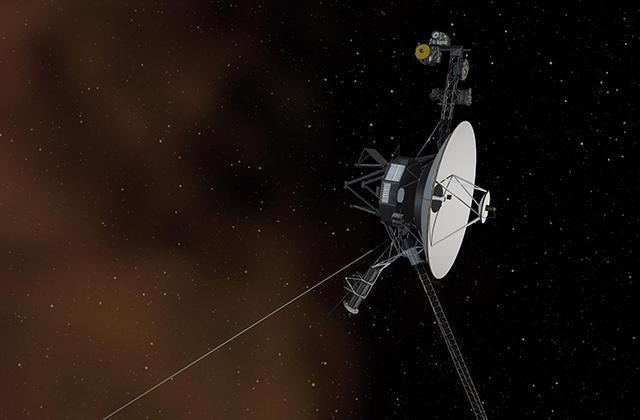Dec 4 2020
The Voyager spacecraft were launched in space before about 40 years. Since then, they have been continuously making discoveries.
 The Voyager spacecraft continue to make discoveries even as they travel through interstellar space. In a new study, University of Iowa physicists report on the Voyagers’ detection of cosmic ray electrons associated with eruptions from the sun—more than 14 billion miles away. Image Credit: NASA/JPL-Caltech.
The Voyager spacecraft continue to make discoveries even as they travel through interstellar space. In a new study, University of Iowa physicists report on the Voyagers’ detection of cosmic ray electrons associated with eruptions from the sun—more than 14 billion miles away. Image Credit: NASA/JPL-Caltech.
Under the guidance of the University of Iowa, a team of physicists has reported, in a new study, the first-ever discovery of bursts of cosmic ray electrons accelerated by shock waves that arise from significant eruptions on the sun.
The discovery was made by instruments onboard both the Voyager 1 and Voyager 2 spacecraft as they were on their journey outward in the interstellar space, which makes them the first craft to record this exclusive phenomenon in the region between stars.
The newly discovered electron bursts move at almost the speed of light, about 670 times faster compared to the shock waves that propelled them initially.
After the bursts, there were plasma wave oscillations emerging from lower-energy electrons that reached the Voyagers’ instruments a few days later—and eventually, in certain instances, the shock wave itself reached as long as a month after that.
The shock waves emerged from coronal mass ejections—bursts of hot gas moving outward from the sun at around 1 million mph.
Even at such a speed, it takes over a year for the shock waves to arrive at the Voyager spacecraft, which have traveled away from the sun (over 14 billion miles and more) compared to any other human-made object.
What we see here, specifically, is a certain mechanism whereby when the shock wave first contacts the interstellar magnetic field lines passing through the spacecraft, it reflects and accelerates some of the cosmic ray electrons. We have identified through the cosmic ray instruments these are electrons that were reflected and accelerated by interstellar shocks propagating outward from energetic solar events at the sun. That is a new mechanism.
Don Gurnett, Study Corresponding Author and Professor Emeritus, Department of Physics and Astronomy, University of Iowa.
The breakthrough could enable physicists to gain better insights into the dynamics of shock waves and cosmic radiation emanating from flare stars (which can differ in brightness for some time, because of violent activity on their surface) and exploding stars.
The physics of such phenomena would be crucial to account while sending astronauts on prolonged lunar or Martian excursions, for example, during which they would be susceptible to concentrations of cosmic rays far more than that experienced on Earth.
The physicists think such electrons in the interstellar medium are reflected off of a reinforced magnetic field at the edge of the shock wave and later accelerated by the motion of the shock wave. Then, the reflected electrons spiral in the direction of the interstellar magnetic field lines, gaining momentum with an increase in the distance between them and the shock wave.
In a paper published in the Astrophysical Letters journal in 2014, physicists J.R. Jokipii and Jozsef Kota theoretically explained how ions reflected from shock waves could be accelerated in the direction of the interstellar magnetic field lines. This study analyzes bursts of electrons detected by the Voyager spacecraft that are believed to be accelerated by a similar process.
The idea that shock waves accelerate particles is not new. It all has to do with how it works, the mechanism. And the fact we detected it in a new realm—the interstellar medium—which is much different than in the solar wind where similar processes have been observed. No one has seen it with an interstellar shock wave in a whole new pristine medium.
Don Gurnett, Study Corresponding Author and Professor Emeritus, Department of Physics and Astronomy, University of Iowa.
The co-authors of the study are William Kurth, a research scientist in the UI Department of Physics and Astronomy; Edward Stone and Alan Cummings from the California Institute of Technology; Bryant Heikkila, Nand Lal, and Leonard Burlaga from the NASA Goddard Space Flight Center; Stamatios Krimigis and Robert Decker from the Applied Physics Laboratory at Johns Hopkins University; and Norman Ness from the University of Delaware.
Journal Reference
Gurnett, D. A., et al. (2020) A Foreshock Model for Interstellar Shocks of Solar Origin: Voyager 1 and 2 Observations. The Astronomical Journal. doi.org/10.3847/1538-3881/abc337.